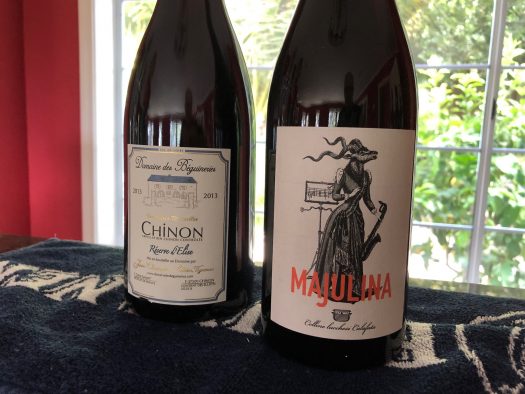Tasting the Wines of Dry Farm Wine Club, 2019 Releases
Dry Farm Wines may sound like a hippie commune where they produce foot-trodden vino, but it’s actually a wine club, and a unique one in my experience.
As oxymoronic as it might sound, Dry Farm claims to be “the only health-focused, low-alcohol, natural wine club in the world.” No, that doesn’t mean you’re getting alcohol-free wines, but rather getting the healthiest wines you can find. All wines shipped by Dry Farm are (among other honorifics):
- Sugar Free (< 1g/L)
- Low Sulfites (< 75ppm)
- Low Alcohol (< 12.5%)
- Mycotoxin/Mold Free
- Additive Free
- Dry Farmed
- Old Vines (35-100 yrs)
- Organically Grown/Biodynamically Grown
- Fermented with Wild Native Yeast
- Hand Harvested
Are old vine wines “healthier” than new vine wines? While the jury may be out on that, I will give massive credit to Dry Farm for one bullet point on that list alone: The wines in its club are all under 12.5% alcohol. That’s quite a feat in a world where wines are habitually pushing 15% alcohol and where a 13.5% alcohol wine is widely considered a “low alcohol” option. 12.5%? That takes some doing.
For Dry Farm, that means looking heavily to the Old World, where lower-alcohol winemaking is still practiced, for sourcing its products. To that end, the service sent us three recent offerings, all of which were born in Europe.
The club runs $159 a month for 6 bottles, $299 for 12, with shipping included. Choose from reds, whites, or a mix of both. Cancel any time. While you can’t buy individual bottlings from Dry Farm, I’m including prices for them below as a point of reference. All three sell for about $20 a bottle at retail, but they’re invariably hard to find. That’s a reasonable markup (especially considering you get shipping included), but only if the wines are worth buying, right? Let’s find out.
2017 Proidl Gruner Veltliner Niederosterreich – A classic, aromatic, and very acidic gruner, Proidl’s offering is rich with minerals and layered with white flowers, lemon peel, and white peach notes. Clean and biting, with just a hint of caramel sauce on the back end to liven things up. A- / $20
2015 Colline Lucchesi Calafata “Majulina” DOC – A strange Tuscan blend of sangiovese, canaiolo nero, aleatico, and ciliegiolo (among other native varietals), only a few of which I’ve ever heard of. Somewhat austere and quite earthy up front, there’s a significant amount of volatile acidity here, giving it a balsamic edge. Some floral and mixed berry notes liven up the finish, which is otherwise tempered by loads of green herbs. B / $20
2013 Domaine des Beguineries Chinon – Cabernet Franc from the Loire. This wine is well past its prime, with a significant herbal, balsamic edge to it. Tart with notes of unripe cherry and slightly sour plum, there’s also a peppery kick that feels a bit at odds with the austerity on display. C+ / $22







My problem with this review is they chose which wines to send you. I have been a club member for a while and the wines they include vary quite a bit in their retail value and taste. In my experience, some of the wines are very good and some not so much. I have seen really varied retail values and hitting the $20 mark is rare. Often they are around $16, sometimes $12 , occasionally under $10.
I just received my first shipment and was quite disappointed. They are all 12.5% alcohol, not less than 12.5% as advertised which I would not have minded except for it’s not what they’ve promoted.. Also, the price per bottle averages at $26+ each and when I searched each bottle received I can buy most at $10-$15 each elsewhere.
Dry Farm Wines are not lab tested for molds and mycotoxins. This is an important point if you are looking for a mycotoxin free wine. They are low in mycotoxins but not mycotoxin free as advertised.
Unfortunately, this is an advertising schema. The low sugar thing is a bit of a farce. Many of their grapes are harvested early before achieving polyphenol ripeness and achieving a good Brix reading – or simply put, wines that quality winemakers would be pleased to offer. That’s why their wines are consistently flat and bland on the palate. There are other quality-focused wine companies I would put my dollar behind, like Healthiest Pour (www.healthiestpour.com).